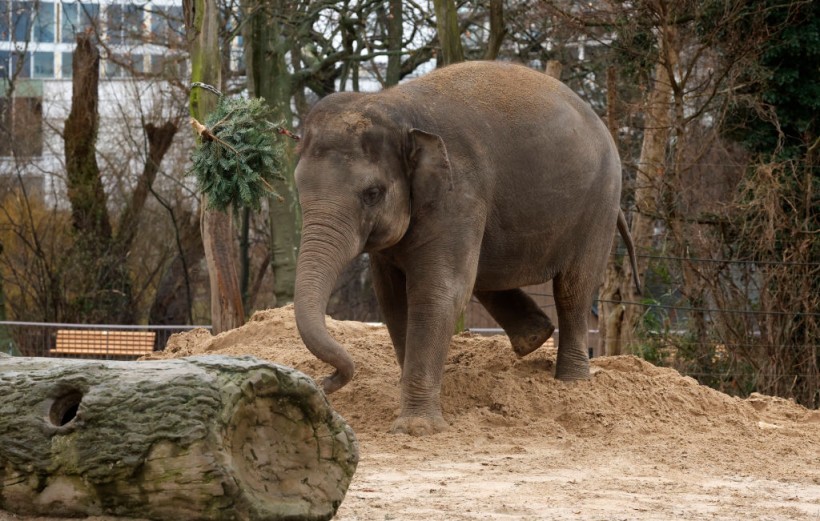At least 160 elephants have perished as a result of Zimbabwe's drought, and conservationists fear that more will die as the hot, dry weather continues.
The elephants died between August and December last year in the 14,651-square-kilometer Hwange National Park, which is home to endangered elephants, buffalo, lions, cheetahs, giraffes, and other species.
Persistent Dry Weather

The Zimbabwe Parks and Wildlife Management Authority (Zimparks) confirmed the deaths of the elephants in the park and attributed them to drought. "We have been doing tests, and preliminary results show that they were dying due to starvation. Most of the animals were dying between 50m and 100m from water sources," said Tinashe Farawo, a spokesperson for Zimparks.
The majority of the elephants that died were young, old, or unwell, according to the park. Southern Africa is experiencing more persistent dry weather, droughts, and extended dry periods. In 2023, there was no rain between February and November in Hwange Park.
Hwange is home to over 45,000 elephants, as well as over 100 other mammal and 400 bird species.
The National Oceanic and Atmospheric Administration predicts a severe El Niño weather phenomenon from October to March, resulting in hot, dry weather and low rainfall.
El Nino is a natural and periodic weather phenomenon that warms portions of the Pacific and influences weather patterns all across the world. While this year's El Nino caused devastating floods in East Africa, it is likely to result in below-average rainfall across southern Africa.
The UN Office for the Coordination of Humanitarian Affairs stated in its November update that this was expected to result in "delayed onset of rainfall and prolonged dry spells," potentially leading to drought conditions in Zimbabwe.
By the end of 2023, according to the report, "the greater part of Zimbabwe had received less than 50% of the seasonal accumulated rainfall when compared to the long-term average."
Read Also: 17 Years Old Elephant Dies in Pakistan Zoo Causing Criticism Due to Poor Animal Welfare Conditions
Threats Of Poaching
As drought conditions worsen, poaching threatens Zimbabwean elephants and other wildlife. Conservation and environmental law groups have linked six new elephant deaths in January to poaching in Gwayi, an area just outside Hwange National Park.
Zimparks confirmed the fatalities and stated that vets were still examining the cause. Environmental groups claim the elephants' tusks were removed, indicating ivory poaching.
According to the Zimbabwe Environmental Law Association, "the poaching incident in Gwayi unfolds against a backdrop of escalating illegal wildlife trade and wildlife crimes."
Conservationists argue that saving elephants is about more than simply the creatures themselves. They are an important ally in combating climate change through the environment by disseminating flora over large distances via feces containing plant seeds, allowing forests to grow, rejuvenate, and thrive.
Trees remove planet-warming carbon dioxide from the atmosphere.
"They perform a far bigger role than humans in reforestation. That is one of the reasons we fight to keep elephants alive," said Trevor Lane, director of The Bhejane Trust, a conservation group which assists Zimbabwe's parks agency.
Related Article: Drought Kills Over 100 Elephants in Zimbabwe While Searching for Food and Water
© 2024 NatureWorldNews.com All rights reserved. Do not reproduce without permission.

![Climate Change is Reducing Dust Levels Worldwide as Arctic Temperature Warms [Study]](https://1471793142.rsc.cdn77.org/data/thumbs/full/70320/280/157/50/40/climate-change-is-reducing-dust-levels-worldwide-as-arctic-temperature-warms-study.jpg)
![Tsunami Hazard Zones: New US Map Shows Places at Risk of Flooding and Tsunamis Amid Rising Sea Levels [NOAA]](https://1471793142.rsc.cdn77.org/data/thumbs/full/70325/280/157/50/40/tsunami-hazard-zones-new-us-map-shows-places-at-risk-of-flooding-and-tsunamis-amid-rising-sea-levels-noaa.jpg)


